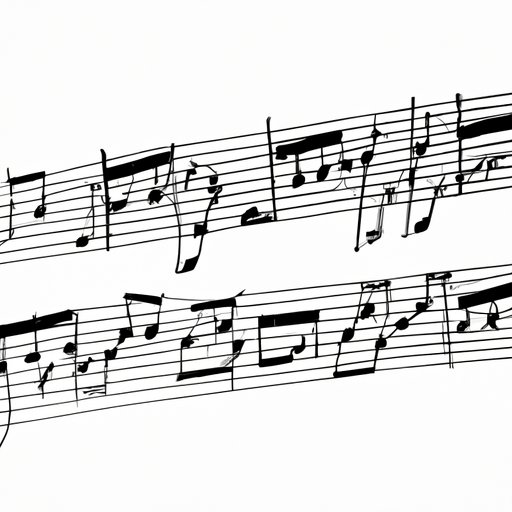Introduction
Have you ever wondered what those numbers at the beginning of a sheet music are for? The answer is time signature. Time signature is an essential part of music that defines the rhythm, meter, and overall feel of a piece. Understanding how it works is crucial for any musician or composer, whether you play instruments or produce music. This article will provide a comprehensive guide on how time signature works, from the basics to advanced techniques, and tips to use it creatively.
Understanding the Language of Music
Before diving into time signature, it’s essential to understand the different parts of a musical score. A typical sheet music consists of several elements, such as staff, bars, notes, and rests. The staff is a set of horizontal lines that represent different pitches. Bars divide the staff into smaller segments, separating notes and rests into groups. Time signature is located at the beginning of each bar, and it tells you how many beats there are in a bar and what type of note represents one beat.
The basic elements of time signature are the top number and the bottom number. The top number tells you how many beats there are in one bar, while the bottom number defines what type of note gets one beat. For example, in 4/4 time, the top number is four, representing four beats per bar, while the bottom number is also four, which means a quarter note lasts for one beat. Similarly, in 3/8 time, there are three beats per bar, and one eighth note represents one beat.
Different time signatures have distinct characteristics that affect the feel and rhythm of music. Common time signatures include 4/4, 3/4, 6/8, and 2/4. 4/4 time is the most common and has a straightforward structure. It’s also known as “common time” and often written as a large “C” at the beginning of a bar. 3/4 time has a waltz-like feel and is used often in classical music and ballads. 6/8 time has a compound meter, which means the beats are divided into groups of three, giving a lively and upbeat feel. 2/4 time is simple and often used for marches and other fast-paced music.
One Foot in Front of the Other
Reading and following time signatures can be challenging at first, but with practice, it becomes natural. One common mistake is confusing the top number and the bottom number. Remember that the top number is the number of beats per bar, while the bottom number determines the value of each beat. Another mistake is not counting the rests, resulting in playing late or early. Make sure to count the rests in between notes, so you keep track of the rhythm.
A metronome is an excellent tool for keeping time and practicing time signatures. It gives you a steady beat to follow, and you can adjust the tempo and time signature as required. Start with a slower tempo and gradually increase it as you improve. Pay attention to the accents in the music, which indicate which beats are emphasized. For example, in 4/4 time, the first beat is usually the strongest, and in 6/8 time, the first and the fourth beats are accented.
The Beat Goes On
Time signature defines the rhythm of music, and different rhythms can be created by changing the time signature. You can experiment with different time signatures to create unique and interesting patterns. For instance, using odd time signatures like 7/4 or 5/4 creates a sense of tension and unpredictability, while using compound meters like 12/8 or 9/8 adds a flowing and graceful feel.
In composition, using time signature creatively can add depth and complexity to the music. You can use odd meters to create an unusual feel, or change the time signature within a piece to create a shift in mood or tempo. Syncopation, which is the use of off-beat rhythms, is also an effective way of using time signature to create interest and tension.
Counting on Time
The key to mastering time signature is practice. Start by practicing basic rhythms in different time signatures, and gradually move to more complex patterns. Using a metronome or a drum machine helps in developing a strong sense of time and rhythm. Additionally, listening to different genres of music that use a variety of time signatures can expand your understanding and creativity.
Remember that time signature is a tool to enhance music, not a rule set in stone. Don’t be afraid to experiment and try new things. Use time signature to create tension, clarity, and interest in your music. The more you practice and understand how it works, the more freedom and creativity you have in your compositions.
Conclusion
Time signature is a fundamental element of music that defines the rhythm, meter, and overall feel of a piece. Understanding how it works is crucial for any musician or composer. In this article, we’ve covered the basics of time signature, including how to read and follow it, different time signatures and their characteristics, how they affect the rhythm of music, and how to use them creatively in composition. Remember to practice and experiment with the tools and techniques provided in this guide to use time signature effectively and enhance your musical creations.
(Note: Is this article not meeting your expectations? Do you have knowledge or insights to share? Unlock new opportunities and expand your reach by joining our authors team. Click Registration to join us and share your expertise with our readers.)
